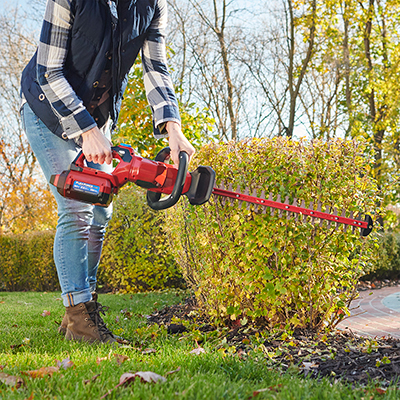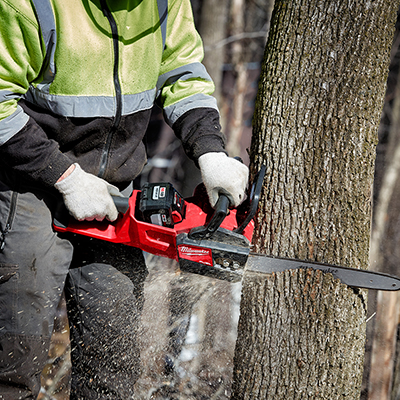Chainsaw Maintenance Tips
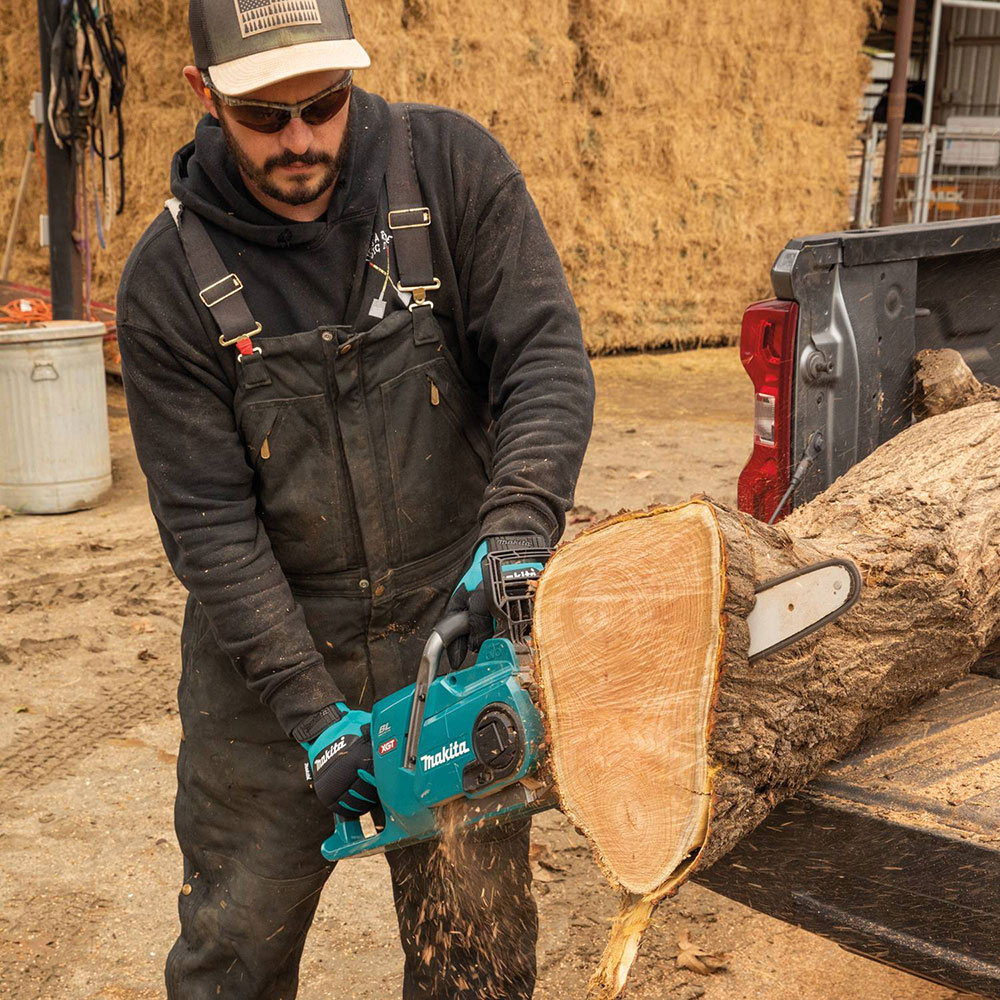
Last updated September 7, 2023
Chainsaws make heavy-duty yard tasks a breeze. Routine maintenance will keep your gas-powered, electric or cordless chainsaws running properly and safely while also extending their life. Keep your chainsaw running well as long as possible. Read this comprehensive guide on chainsaw maintenance and learn new tips to maximize your tool’s lifespan.
Difficulty:
Beginner
Duration:
Over 1 day
Table of Contents
Check the Chain, Chain Brake and Tension
Inspect the Lubrication System
Clean the Air, Fuel and Oil Filters
Check your Spark Plugs and Starter
Test the Trigger and Safety Features
Rotate the Bar and Tighten Loose Parts
Check the Chain, Chain Brake and Tension
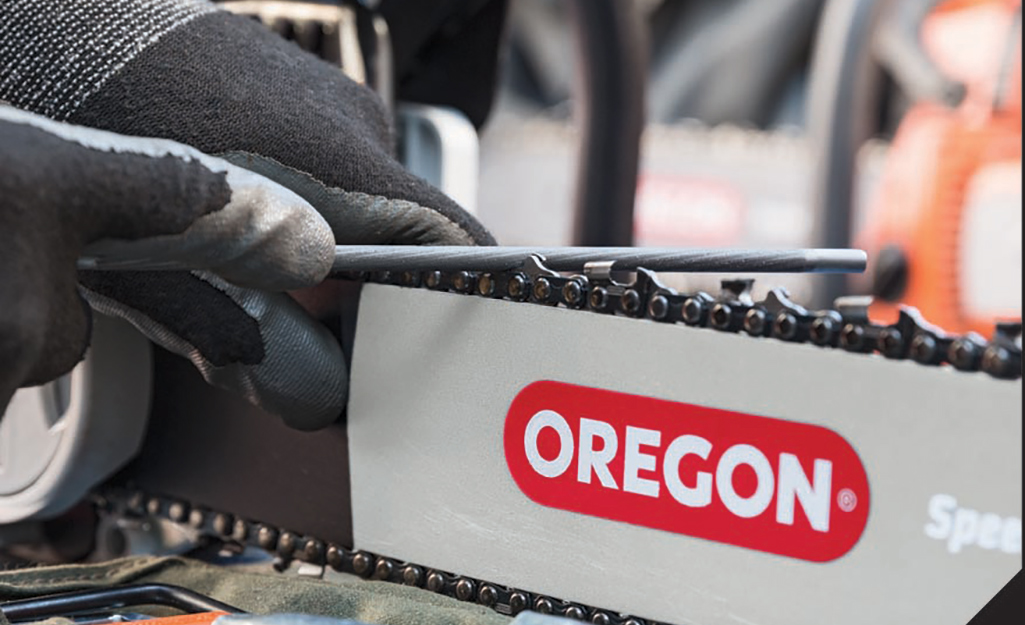
Before each use, perform a quick maintenance check on your chainsaw before revving the engine to check the chain safety and tension.
Wearing work gloves, clean the chainsaw by scraping out any debris inside the track. Inspect the air intake vent for debris in the slots. Finish the exterior inspection by checking all nuts, bolts and screws are tightly secured.
Sharpen your chain using the file size recommended by the manufacturer, inspect its condition and replace it if damaged. Check the chain tension to ensure it’s not too loose, and tighten it if necessary.
Next, verify the chain brake is functioning. In the event of kickback, the chain brake should instantly engage to stop the china from rotating around the guide bar. It’s one of the most vital safety features on your chain. To check that it’s functioning properly, follow these steps:
- Place the chainsaw on a stable surface. Release the chain brake and start the saw.
- Squeeze the throttle to a high speed. With your hand firmly gripping the top handle, jerk your wrist forward to engage the chain brake.
- Don't use the chainsaw if the brake seems late to engage or doesn’t engage at all
- Refer to your owner’s manual for repair and replacement instructions
Tip: Keep a spare chain on hand for a quick and easy replacement that doesn’t interrupt your workflow.
Inspect the Lubrication System
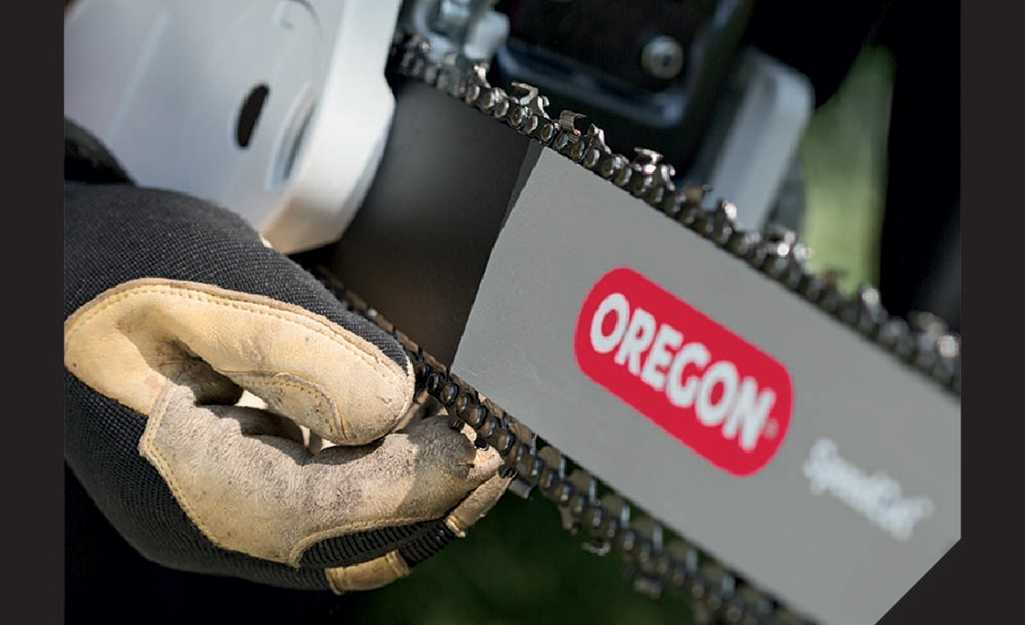
While the chainsaw is running, check the lubrication system is working and that oil is being fed to the chain. Place a sheet of white paper down and rev the chainsaw engine. You should see oil spray marks on the paper. If not, clean the oil reservoir and replace the filter.
Lubricate the clutch drum bearing between every few uses. This prolongs the life and performance of your clutch. Keep lubricant on hand to make maintenance efficient and hassle-free.
Clean the Air, Fuel and Oil Filters
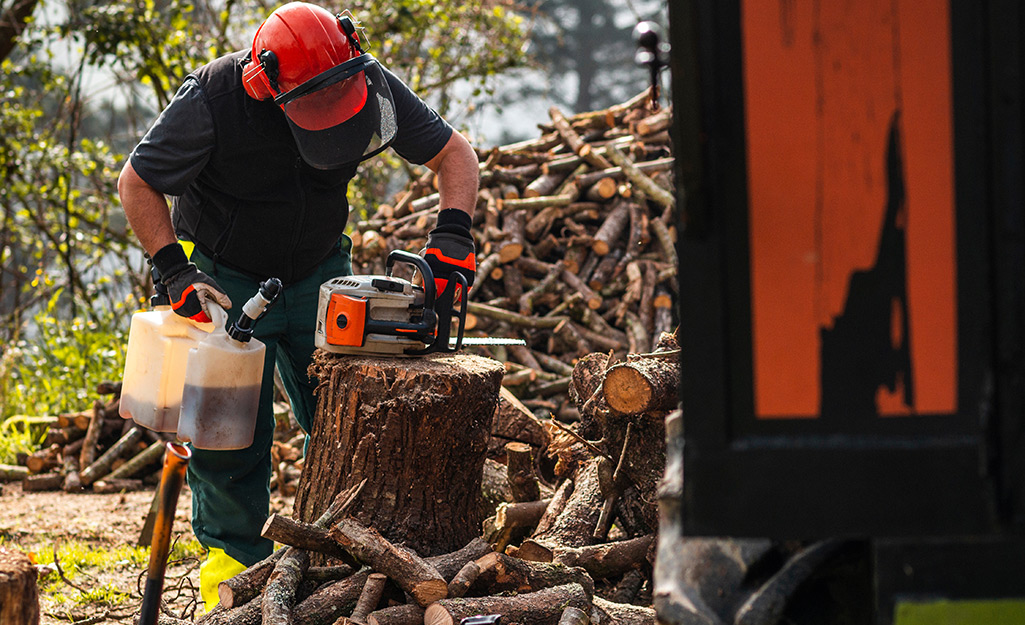
Check the air, fuel and oil filters are a regular basis. To properly care for each filter, follow these steps:
Clogged air filters lead to restricted airflow, causing the engine to overheat. Remove the cylinder cover to access the air filter. Remove the filter. Use a can of compressed air and spray from the inside out to remove light dust and debris. If a good cleaning doesn’t remove everything, replace the air filter.
For gas-powered chainsaws, the fuel filter is located under the fuel cap. Look for a small cylinder attached to the end of a tube. If the filter becomes clogged with dust, it makes the engine hard to start. Remove the filter from the tube, and insert a new filter every few months.
All chainsaws also have an oil filter located under the cap of the bar lubricating tank. Fish the filter out and inspect it for dust. If clogged, it restricts the flow of oil needed to keep the guide bar and chain lubricated. Clean with gasoline or replace if too much debris and dirt are present.
Tip: Follow the manufacturer’s recommendations for oil and fuel mix ratios, and use a dedicated gas can to fill your tank and keep your chainsaw engine running smoothly.
Check your Spark Plugs and Starter
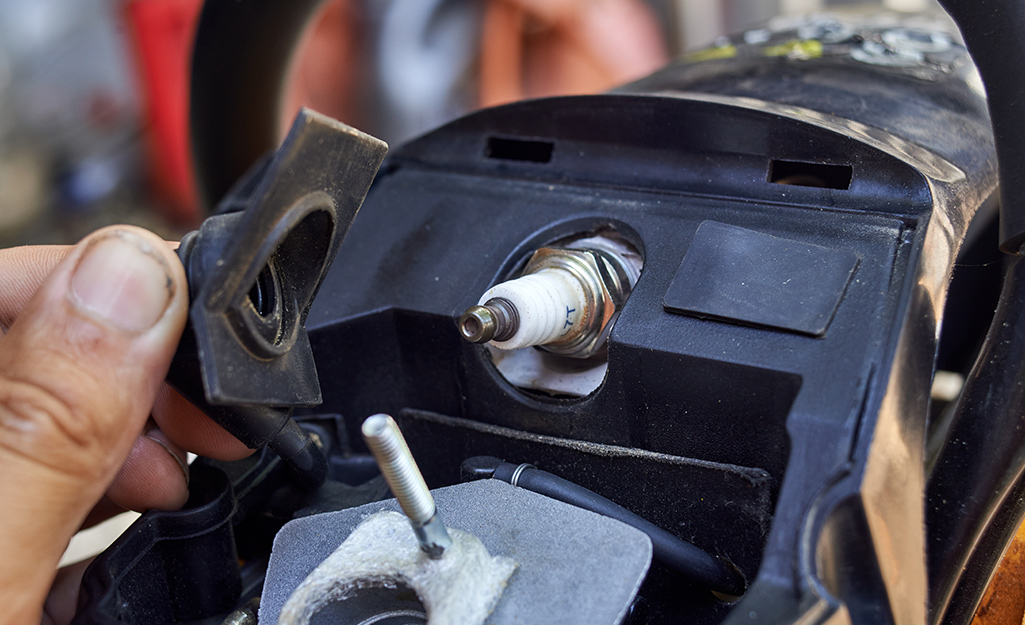
Periodically remove and clean the spark plug. Measure the gap. The gap should be set at the manufacturer’s specifications in your owner’s manual. Adjust as needed.
Look for damage or excessive wear to the starter and the starter cord. If they’re damaged, have your chainsaw serviced or follow the recommendations in your owner’s manual. Clean the air intake slots located on the starter housing. Test the emergency stop switch to ensure it works. The engine should shut off immediately. Clean the flywheel fins and ensure the recoil spring is functioning properly.
Tip: Keep the right spark plugs on hand to make replacement a quick fix if needed.
Test the Trigger and Safety Features
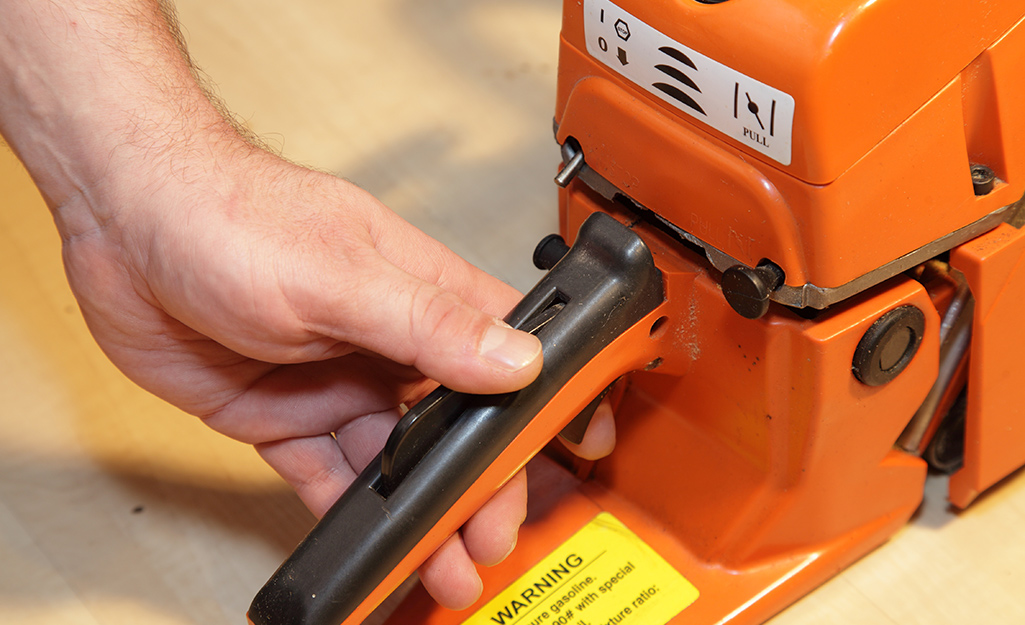
Check the throttle trigger before each use to confirm it’s operating smoothly. If the throttle trigger sticks or the engine doesn’t idle when you release the trigger, don’t use the chainsaw. Take it to a service center for inspection or refer to your manual for troubleshooting.
Any feature features, including the throttle trigger lockout, should be monitored and inspected before use. Keep the chain brake clean and check the catcher for damage. If any safety components are damaged, replace them immediately before use.
Tip: Use safety goggles and heavy-duty work gloves to protect yourself when inspecting your chainsaw’s safety features.
Rotate the Bar and Tighten Loose Parts

The narrow groove on the edge of the chainsaw bar holds the chain as it rotates during use. The friction and pressure cause the bar to wear down on one side over time. Before use, inspect your bar. Using cloth wipes, clean out the bar groove to prevent excessive wear. Inspect the lubrication hole and remove any clogs. If you notice one side is more worn than the other, rotate and flip your bar.
With the vibration created by the engine, some screws, nuts, bolts or parts may shake loose during use. Inspect your saw before and after use for loose parts and secure them as needed.
Clean Your Carburetor, Fins and Tanks
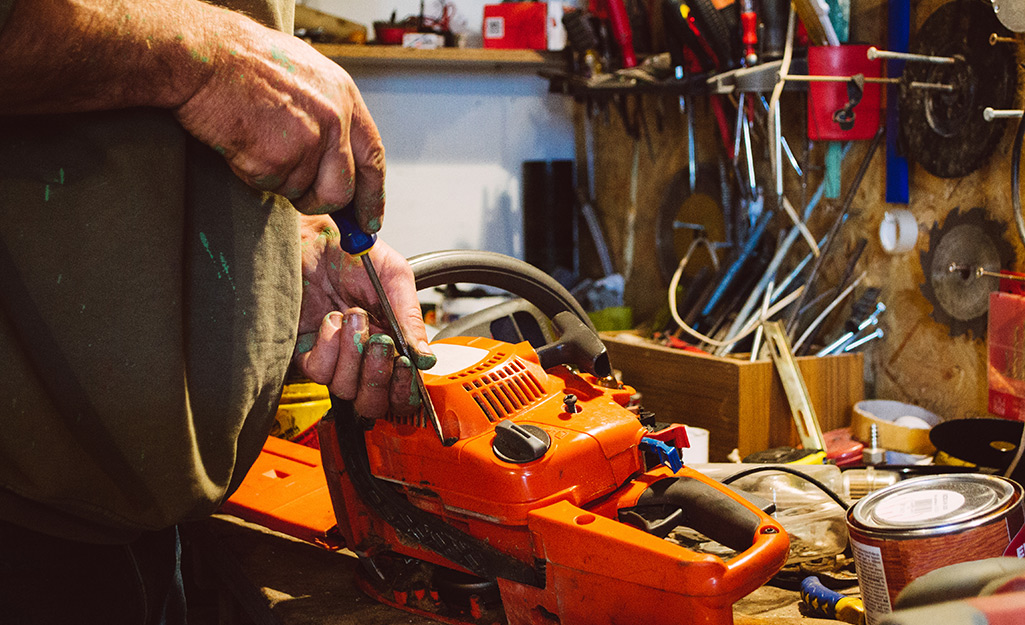
Your chainsaw’s cooling finds are located on the cylinder. They ensure proper heat distribution and cooling for safe use. Once every few uses, wipe the cooling fins down and remove dust, dirt and debris buildup.
Clean the carburetor and your air box. Check the screen in your chainsaw’s muffler. Clean it off, removing as much dust as possible. If the screen is damaged or very dirty, replace it.
Once every month or two, clean your tanks. Old gasoline can leave a gunky residue. This residue build-up is bad for your engine and fuel consumption. Clean your fuel and oil tanks following the recommendations in your owner’s manual.
Store Your Chainsaw Properly
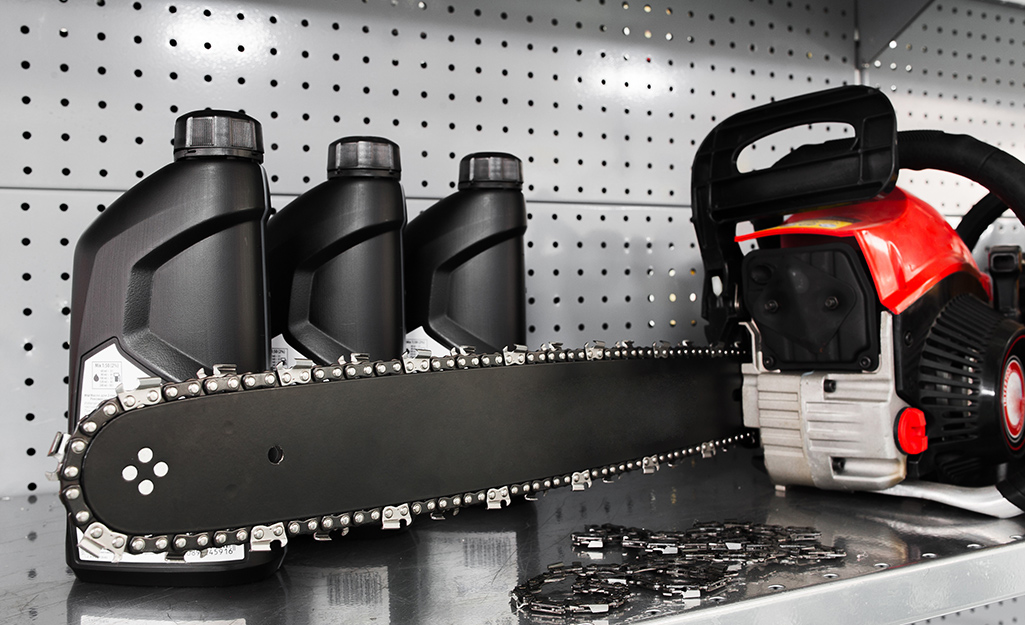
At the end of the season, or if you don’t plan to use your chainsaw for more than two months, drain the gasoline or add a fuel stabilizer. Condensation will build in the fuel tank, and the moisture makes starting the chainsaw difficult the next time you use it.
Store your chainsaw in a dry, cool, place like a garage or storage shed. Keep the components clean and debris-free between uses. If a chainsaw gets waterlogged, its various parts can rust, causing it to seize up or the engine to run improperly.
The main thing that determines chainsaw longevity is how you maintain it. With these chainsaw maintenance tips, you can continue to get great use out of your chainsaw season after season. Get everything you need from The Home Depot without leaving the workshop. The Home Depot delivers online orders when and where you need them.
